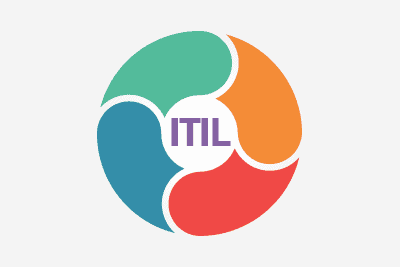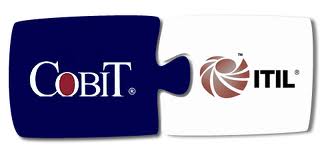 What is the relationship between IT Compliance and our Company’s Service Lifecycle? Can we use ITIL & COBIT as frameworks to deal with our company’s Service Lifecycle, even if our company is rather from Small to Medium-Size?
What is the relationship between IT Compliance and our Company’s Service Lifecycle? Can we use ITIL & COBIT as frameworks to deal with our company’s Service Lifecycle, even if our company is rather from Small to Medium-Size?
Independently from the kind and size of your company, you need to manage your service lifecycle in order to best capitalize your efforts and investments; and IT Compliance is a main frame to start with. Then, the answer is simple: We need ITSM tools based in ITIL & COBIT frameworks to assure IT Compliance throughout our company’s service lifecycle.
But what is the Company’s Service Lifecycle?
According to Kauffman Entrepreneurs, the Company’s Service Lifecycle is: “The common stages a product or service may go through during its life are introduction, growth, maturity, and decline or innovation.” (…)
Those are:
Introduction stage
Profits are low in this stage because research and development, production, and marketing costs are high. Prices are set high on the product or service to recoup some of the development and introduction costs. (…)
Growth stage
Sales generally increase with the demand for the product. Cash flow improves and profits are at their peak. (…)
Maturity stage
Sales may continue to increase or level off. Profits decrease since prices are continually lowered to compete. Still, a great amount of cash flow is generated through sales. Conduct market research to determine trends. Invest in research and development. (…)
Decline or innovation stage
Sales drop rapidly even though prices continue to fall. Profits are extremely low at this stage, but the product or service has generated sufficient cash flow during its life.

Last, Kauffman Entrepreneurs encloses this articly by saying: “Knowing where your products or services are in their service lifecycle will help you determine refinements or adjustments you may need to make to align them with the vision and strategy you have already developed.”
In such regard, what do ITIL & COBIT can do to help enterprises to manage their service lifecycle, while attending IT Compliance? Simple: Those frameworks helps you to comprehensively follow the growth and decline of your services througoht their lifecycle, so you can make the necessary adjustments to keep pace with innovation.
And what about IT Compliance? What is it about?
According to AuditShark, we found:
IT compliance is a catchall term that actually encompasses two separate but closely related concepts.
First off is the issue of internal compliance. This encompasses the procedures laid down by an operational entity such as a corporation or an educational institution that stipulates how users shall operate the equipment at their disposal. These principles are designed to increase productivity and ensure security. (…)
External compliance is a question of adhering to principles laid down by an entity outside the internal network structure, such as a government. (…)
In other words, IT Compliance covers all criteria to protect assets and services from micro to macro. And ITIL/COBIT frameworks help a great deal to actually follow them in a structured and formal way.
Now, let’s give a look on what we need to look in ITSM tools to deal with IT Compliance in our SMEs companies to make the best of their service lifecycle:
 ITIL
ITIL
ITIL is the acronym for Information Technology Infrastructure Library. It’s a framework that covers a broad range of topics with the purpose of helping companies to adapt to quick changes. Regarding the company’s service lifecycle, ITIL divides its topics into five distinct stages:
- Strategy
- Design
- Transition
- Operation
- Continual Improvement
Each stage complies a set of principles, roles, processes and performance measures adapted to companies of all size. Additionally, ITIL stages depend on each other for both, input and feedback.
For ITIL, the company’s service lifecycle is a never-ending process that repeats over and over again. Like this, supervisors make sure that people are incorporating improvements and the company isn’t missing any opportunities for improving.
ITSM tools based on ITIL consider this protocol sufficient to guarantee the correct flow for the company’s service lifecycle. Additionally, ITIL framework also takes into consideration the use of other software to make predictions about the market’s behavior; so the companies can make informed decisions on strategies and business plans for improving their company’s service lifecycle.
In short, ITIL guarantee IT compliance by including a range of protocols to monitor and improve the company’s lifecycle; and such protocols anticipate the inclusion of new software and specialized tools.
COBIT
COBIT is the acronym for Control Objectives for Information and Related Technologies, and it already counts with five versions. COBIT’s most recent version takes into consideration the latest guidelines for IT compliance.
COBIT framework helps to define generic processes for ITSM. Together, processes provide input and output conceived to improve the overall business.
COBIT also includes a set of recommendations for best practices for control and governance processes regarding IT systems. In other words, COBIT simplifies the alignment between IT and business practices at all levels.
COBIT 5 is the latest version available. It came to light to consolidate COBIT 4, Risk IT, and Val IT into one single framework that act as enterprise framework. Additionally, COBIT is compatible with ITIL framework.
 ITIL & COBIT
ITIL & COBIT
The combination of both frameworks provides you more information about your company. Many IT Managers use this combination to have best visibility on their processes; although there is a slight tendency among them to not to use them at the same time.
The criterion of use will depend on the information that they look for; and the processes they need to complete. With these powerful combination, SME managers have a comprehensive view for IT compliance while guaranteeing a better understanding of the company’s service lifecycle. And speaking about it…
IT Compliance: ITIL, COBIT & the Company’s Lifecycle
As we can appreciate, we have a better view on our company’s service lifecycle if we count on ITIL & COBIT frameworks, independently of our company’s size. IT compliance is the superstructure that work as common canvas for best practices, while ITIL & COBIT help us to knit them throughout our company’s service lifecycle.
Finally, ITSM tools based on ITIL/COBIT frameworks guarantee your IT compliace at all levels, while helping you to comprehensively follow your company’s service throughout its lifecycle.
Now that you have a better understanding on the relationship between all of them, what are you expecting to leverage your enterprise?



